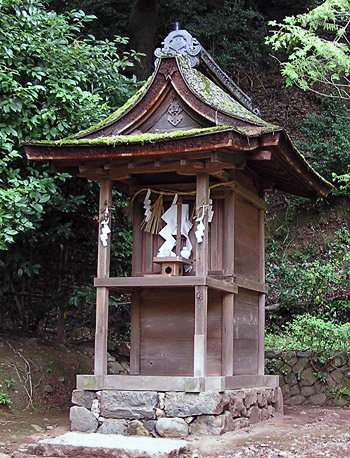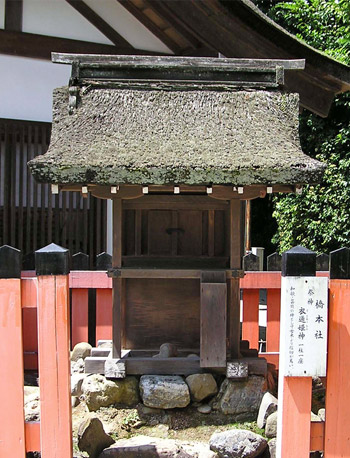|
||
 |
||
 |
 |
@
(C)2001 Japanese Architecture and Art Net Users System.@No reproduction or republication without written permission.
fÚÌeLXgEÊ^ECXgÈÇASÄÌRec̳f¡»E]ÚðֶܷB
|
||||||
| @ | ||||||
| misedana-zukuri@©¢I¢ | ||||||
| KEY WORD :@architecture / shrines | ||||||
| @ | ||||||
| Also written XI¢. Also dashimise-zukuri oµX¢. A very small shrine building, one bay wide, within the precincts of a larger shrine. Usually near the main sanctuary *honden {a, it is characterized by the absence of front entrance steps leading to the doors of the sanctum. Usually the misedana-zukuri is 1 x 1 bay *ikkensha-zukuri êÔТ (approximately 60cm~150cm), but some are 1 x 2 bays, nikensha ñÔÐ, 1 x 3 bays, sangensha OÔÐ, and at least one is 1 x 7 bays shichigensha µÔÐ. Instead of the steps, a shelf *tana I, is extended from approximately the level of the sanctuary itself to provide access to the shrine. These buildings usually have an elongated eave style gable *nagare-zukuri ¬¢, and have front eaves that project considerably to give additional support. Examples are found at Hakusan Jinja R_Ð (1305) in Nagano prefecture. The elongated eave is supported by posts that have boat-shaped brackets *funahijiki DIØ, and an eave purlin *dashieta o . At Nishina Shinmeiguu mÈ_¾{ in Nagano prefecture, the misedana-zukuri has simple gable roofs *kirizuma yane ØÈ®ª, and for that reason no added support is necessary for the front eave. The shelf rests on extended tie beams that run from the rear posts to the front posts. Shrines in misedana style are placed on sills or footplates *dodai yä, usually with their ends extended. The use of footplates as a base for very small shrines may have existed before the method of sinking pillars directly into the ground *hottatebashira x§, or placing pillars on base stones. See *mikoshiyadori ä`É. It is believed that like small shrines in the Kasuga style *kasuga-zukuri tú¢, misedana-zukuri shrines may have rested on footplates so that they could be transferred easily to a different location. In any case, such small shrines, especially those constructed on footplates, would have been an ideal place in which to house a deity who was believed to be among the people for only a short time during a festival. Examples include: Ookuwamura Hakusan Jinja Honden åKºR_Ð{a; Nishina Shinmeiguu Keidaisha mÈ_¾{«àÐ; Hakusan Jinja Honden R_Ð{a (1334), 1 x 1 bay, all in Nagano prefecture; Nishigoori Jinja Sessha Tenjinja Honden ÑD_ÐÛÐV_Ð{a (1363) in Osaka ; Kongoubuji Sannouin Honden Souja àõR¤@{aÐ (after 1523) in Wakayama prefecture, 3~1 bays with 1- bay deep peripheral area *hisashi ù, across the front forming the shelf, and Nanguu Jinja Sessha Shichiouji Jinja Honden ì{_ÐÛе¤q_Ð{a (1642) in Gifu prefecture, 7 x 1 bays. See *senzasai JÀÕ. | ||||||
| @ | ||||||
|
||||||
@ |
||||||
| REFERENCES: | ||||||
| @ | ||||||
| EXTERNAL LINKS: | ||||||
| @@ | ||||||
| NOTES: | ||||||
| @ | ||||||
(C)2001 Japanese Architecture and Art Net Users System.@No reproduction or republication without written permission. fÚÌeLXgEÊ^ECXgÈÇASÄÌRec̳f¡»E]ÚðֶܷB |
||||||
| @ |